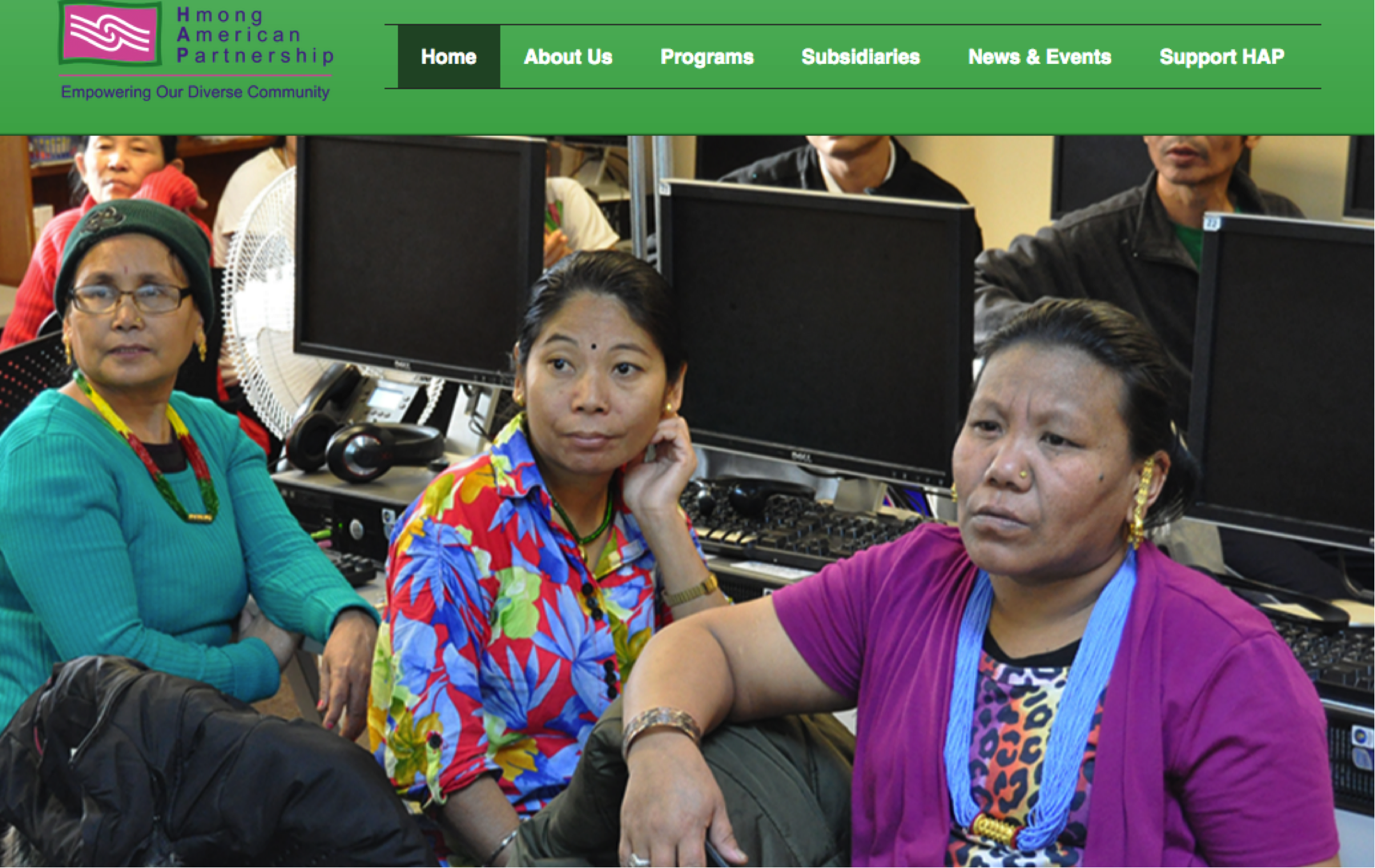This article describes critical sociocultural pedagogical practices for sheltering instruction for K-12 English Learners, questioning the status quo in ESL teacher preparation which over emphasizes language to the exclusion of the broader sociocultural, sociopolitical, and sociohistorical context in which students are educated.
The Problem
In the United States, students who are multilingual, multicultural, and low-income do not achieve academically on par with their White, monolingual, majority culture peers (Calderón, Slavin, & Sánchez, 2011; Morrell & Noguera, 2011; U.S. Department of Education, 2009). In response and over time, the field of English as a Second Language (ESL) Education has developed increasingly more sophisticated descriptions of what public educators need to know about and do with language (e.g., TESOL, 1997; WIDA, 2012). For over 15 years, the Sheltered Instruction Observation Protocol (SIOP) has been the dominant model of professional development for ESL and general educators alike (Echevarria, Vogt, & Short, 2008). Still, the underachievement of English Learners (ELs) continues unabated.
Like many other fields, ESL professionals have underestimated the scope and depth of change needed to radically improve schooling for ELs. Teacher preparation for multilingual, multicultural, and/or low-income students requires more than improved subject matter knowledge, greater knowledge of English, or better checklists for lesson planning. It requires more than minor pedagogical and curricular adjustments.
Video Clip One depicts standard teaching in one urban elementary school prior to the beginning of a year of ESL-focused instructional coaching. The student population was 75% Latino and 45% designated Limited English Proficient. The video clip captures 60 minutes of instruction in two minutes, highlighting every instructional change made by the teacher. This teacher’s routine was typical of literacy instruction for the 29 teachers observed: Teachers spent 86% of instructional time in a teacher-dominated whole class configuration; only 14% of student time was spent working in small groups or with a partner (Teemant, 2014). Unfortunately, similar classroom observations in a high-performing suburban district, with a small but growing EL population, showed elementary teachers relied on whole class instruction 89% of the time (Teemant, Wilson, Bhathena, & Brandt, 2013). Such teaching values teacher talk, student silence, compliance, and good behavior. It relies on individual work, knowing facts, copying or repeating, and student use of isolated words and ideas. Standard teaching practice cannot reverse ELs’ underachievement because it does not create conditions sufficient for (language) learning.
Video Clip One: Standard Practice Prior to ESL Instructional Coaching
We need to reconsider what it means to prepare every teacher—generalists and specialist alike—to effectively teach ELs. It is naïve to believe that by advocating for the same things another 15 years, we will get a different result. Something much more radical, complex, and holistic is needed to unsettle current school practices in ways that benefit ELs, who are often marginalized by school practices as well as society. Fullan (2007) describes reculturing as a process for “how teachers come to question and change their beliefs and habits” (p. 25). We as ESL teachers and teacher educators would benefit from engaging in a reculturing process.
Driving Change With New Theoretical Perspectives
Teemant, Leland, and Berghoff (2014, p. 137) observed that ELs “need more than academic knowledge. They need to be comfortable with hybrid identities, competent in reading power relations and challenging everyday assumptions, and agentive in the face of inequities.” This type of holistic perspective on student development goes beyond theories of (language) learning that focus on observable behavior or even the individual mind. Sociocultural learning theory (Vygotsky, 1978) and critical social theory (Freire, 1994; Sleeter & Bernal, 2004) offer starting points for reculturing our profession.
Vygotsky (1978) argued that (school) knowledge was cultural, learning was social, and teaching was assisting. That is, teachers do more than present, observe, or auditing learning: Teaching should ideally make the interactive space between the teacher and learners active with dialogue and various forms of assistance to learn (e.g., questioning, rephrasing, modeling, etc.). Smagorinksy (2013, p. 194) also observes that for Vygotsky “emotions are inseparable from thinking” and “all aspects of human life are interrelated.” Therefore, “the re-education of teachers for addressing difference is central” to resolving the marginalization of culturally and linguistically diverse students in our schools (p. 195). Sociocultural theory describes teachers as central to mediating learning but also social relationships.
Critical social theory (e.g., Freire, 1994; McLaren & Kincheloe, 2007) addresses issues of identity, asymmetries of power, and use of agency in learning interactions and in society. Freire’s (1994), for example, envisioned learning as a means of interrogating the status quo, reflecting on society from multiple perspectives, and taking appropriate action to address inequities resulting from standardized practice. Howard and Milner (2014, p. 206) argue for the inclusion of a “third dimension” of knowledge for teaching, which they identify as “racial and cultural knowledge.” Because a majority of educators and teacher educators are predominately White, middle class, and monolingual (Cochran-Smith & Zeichner, 2005), they are not adequately prepared in this third dimension to understand and reach their students from different social, racial, or cultural backgrounds. Sleeter (2008) observes, “Lacking familiarity with communities their students of color come from, many White teachers are unable to build bridges between students and the curriculum” (p. 559). Unconsciously or consciously, teachers and students enact their varied and hybrid identities, power relations, and use of agency in every classroom interaction. To bridge differences, educators benefit from knowing that:
The most reliable quality criterion for instructional activity is that it should be patterned to produce diversity: of task, groups, roles, power, and language genres and codes. Diverse students have diverse strengths and diverse needs. Students, like teachers, have much to learn from one another and expanding joint activity beyond existing affinity groups can enrich these opportunities. (Tharp, Estrada, Dalton, & Yamauchi, 2000, p. 67)
Taken together as critical sociocultural perspectives (Lewis, Enciso, & Moje, 2007), educators can address schooling for ELs from a whole-child perspective, where issues of identity, asymmetries of power, and use of agency in the learning process can be examined in light of broader cultural, historical, political, and ideological perspectives outside the classroom. This requires teachers and teacher educators themselves to pay much greater attention to “their own deep-rooted beliefs, ideologies, and values” and “understand them in relation to their students” (Howard & Milner, 2014, p. 207). Critical sociocultural perspectives offer promising direction in how to radically improve ESL teaching and teacher preparation in order to achieve equity in opportunities and outcomes for ELs. Johnson (2006, p. 237) identified this as the “sociocultural turn” in second language teacher education: It is time to move more intentionally in this critical sociocultural direction.
Critical Sociocultural Pedagogy: The Six Standards Example
What pedagogical practices result from critical sociocultural theory and how are they radically different from traditional conceptions of teaching? One pedagogical model of critical sociocultural practices is called the Six Standards for Effective Pedagogy (Teemant et al., 2014; Tharp et al., 2000). The Six Standards embody the following principles of learning: collaboration, language use, meaning making, teaching complex thinking, teaching through conversation, and civic engagement in a democracy. Figure 1 captures these principles as the following pedagogical practices.
- Joint Productive Activity – the teacher and a small group of students collaborating to create a shared product together
- Language and Literacy Development – employing sustained opportunities to read, write, or speak with assistance
- Contextualization – activating students’ knowledge and skills from home, school, and community to learn new content
- Challenging Activities – challenging students toward cognitive complexity
- Instructional Conversation – the teacher engaging a small group of students in a sustained, goal-directed academic conversation
- Critical Stance – teaching to transform inequities through democracy and civic engagement
When a teacher designs a learning activity to use at least three of the Six Standards in the same activity, the teacher has not only created the conditions for (language) learning, but also the “dialogical spaces where all the lived experiences and worldviews can be heard” (Leistyna, 2009, p. 52).

While the first five standards represent sociocultural principles (Tharp et al., 2000; Five Standards), the last principle derives from a critical pedagogy perspective (e.g., Freire, 1994; Lewison, Leland, & Harste, 2015). Teemant et al. (2014) define Critical Stance as involving critical thinking but going beyond it, asking students to name, reflect upon, and take action within their sphere of influence to apply school learning to remedy societal inequities encountered in students’ lives and communities. When teachers take a Critical Stance in their teaching, they contextualize learning by making rich connections to home, school and community, but they also encourage learners from non-dominant cultures, communities, and low socio-economic backgrounds to question school knowledge from multiple perspectives as they apply school knowledge in real world settings.
Another important feature of Six Standards pedagogy is its emphasis on small group activity centers—a teacher center and multiple independent student centers. Small group configurations, especially the Instructional Conversation, create the necessary conditions for teachers to regularly assess, assist, and advance student learning within the zone of proximal development (ZPD) (Vygotsky, 1997). In this way, students’ cognitive development is advanced through social interactions between a novice and an expert when (a) activities are slightly above the novice’s level of competence, (b) require expert assistance to accomplish, and (c) timely assistance is provided as required for successful performance.
Video Clip Two depicts the same teacher in Video Clip One after seven cycles of ESL instructional coaching in the Six Standards. The video clip is thin-sliced, showing 60 minutes of language arts instruction in six minutes. It briefly shows how the teacher reviews key vocabulary, prepares students for working in centers, showcases students’ experiences in and outside of school, conducts an instructional conversation with a small group of students, which prepares them to participate in a follow up center where they provide a rationale justifying how they evaluate a character in a story they have read. The video clip provides evidence that a typical teacher can move away from traditional pedagogy toward increasingly more critical sociocultural practices with the assistance of instructional coaching.
Video Clip Two: Teaching After ESL Instructional Coaching
Six Standards teaching is intentionally collaborative, language rich and dialogic, contextualized, cognitively challenging, critical, reflective, and action oriented. Teachers also mediate social relationships between diverse teacher and students by creating opportunities for positive interdependence and intersubjectivity (i.e., shared experiences and ways of interpreting the world) through meaningful collaboration. Ideally, teachers intentionally connect school knowledge in age-appropriate ways to “how majority-minority cultures, languages, economics, and learning are influenced by the sociocultural, sociohistorical, and sociopolitical aspects of classroom activity and society at large” (Teemant et al., 2014, p. 140).
Video Clip Three depicts how a group of sixth graders in California’s Central Valley apply Critical Stance, in particular, during their integrated literacy and science unit on the ocean. One group of students has focused on how humans pollute the ocean. They have written a short puppet theater play they will be presenting to groups of younger students at their school as part of a class project. This video clips shows how the students work together as a small group, independent of the teacher, to refine their script and practice for their presentation.
Video Clip Three: Example of Critical Stance in a Sixth Grade Classroom
Six Standards Research: Instructional Coaching Outcomes
Living critical sociocultural pedagogy in everyday classroom instruction presents teachers with opportunities as well as challenges. Several recent studies (e.g., Teemant, 2014;
Teemant & Hausman, 2013; Teemant et al., 2014; Teemant, Wink, & Tyra, 2011) have incorporated sociocultural (Five Standards) and critical sociocultural practices (Six Standards) into an instructional coaching professional development model targeting urban teachers of ELs. In these studies, coached teachers participate in an intensive 30-hour workshop followed by seven cycles of individual instructional coaching with expert coaches across the school year to support implementation of sociocultural or critical sociocultural pedagogy. For each study, teacher use of the Six Standards is measured using the Standards Performance Continuum Plus (Teemant et al., 2014). As shown in Figure 2 (click on the title to see the rubric pictured), the “not observed” end of the continuum describes learning as primarily whole class, teacher-dominated, rote, mechanistic, and abstract.
The “enacting” level defines critical sociocultural practices as collaborative, dialogic, challenging, civically engaged, and language and literacy rich small group learning with assistance from a more knowledgeable other. The highest or “integrating” level requires teachers to use at least three of the standards at the “enacting” level simultaneously (i.e., the 3 by 3 rule).
Teemant, Wink, and Tyra (2011) studied how instructional coaching assisted elementary teachers (N = 41) in California’s Central Valley to use sociocultural practices (Five Standards only). Teachers demonstrated statistically significant growth in use of the Five Standards and fidelity with the small group instructional model. Subsequently, in a quasi-experimental study in the Midwest with 36 urban elementary teachers, Teemant (2014) similarly found the combination of the intensive workshop and seven instructional coaching sessions led to significant teacher growth during the coaching year as well as sustained use of the Five Standards one-year after the end of coaching.
In a repeated measures replication study, Teemant and Reveles (2012) documented a generalized pattern of elementary teacher growth in use of sociocultural practices. Teachers quickly adopted use of Joint Productive Activity and Language and Literacy development, changing the organization of their classrooms through increased use of small group configurations. Next they begin to assist students in the process of learning by adding the standards of Contextualization and Challenging Activities. Teachers grew the most in their use of the Instructional Conversation. Investigating secondary urban teachers (N = 22), Teemant, Yen, and Wilson (2015) found large effect differences between humanities and STEM secondary teachers. Unlike humanities secondary teachers, STEM teachers showed no significant growth in use of the sociocultural practices, struggling to move to small group instruction, preferring teacher-dominated whole class configurations, with limited student talk, collaboration, or assistance to learn. Finally, despite a plethora of research lauding the benefits of using students’ everyday knowledge from home, school, and community as the basis for learning new academic content (e.g., Bransford, Brown, & Cocking, 1999; González, Moll, Amanti, 2005; Tharp & Gallimore, 1988), elementary and secondary teachers both struggled to contextualize instruction given sanctioned texts, practices, and pacing guides (Teemant, 2014; Teemant et al., 2015).
In an effort to further disrupt standard teaching practices, Teemant et al. (2014) articulated and validated Critical Stance as a sixth observable teaching practice along a continuum (Figure 2). Using correlational and quasi-experimental designs, Teemant et al. studied 36 urban elementary teachers’ use of the Six Standards as a result of instructional coaching. Coached teachers made significant growth in use of Critical Stance; however, Critical Stance was also the most difficult of the Six Standards to implement with fidelity. Teemant and Bhathena (2015) studied elementary and secondary teacher response to Six Standards instructional coaching (N = 30). Figure 3 provides a column graph comparing elementary and secondary teacher use of the Six Standards on a 4 points scale at the end of seven cycles of coaching. Elementary teachers implemented critical sociocultural practices with greater fidelity than secondary teachers as a result of instructional coaching, with Critical Stance also being the most difficult standard for both groups to implement.

Nevertheless, Teemant and Hausman (2013) established predictive validity with Critical Stance, demonstrating even moderate growth in use of Critical Stance by elementary teachers resulted in significant gains in English development for ELs. Elementary teacher use of Critical Stance also significantly improved language arts achievement for both native and non-native speakers of English. In sum, the Six Standards pedagogy and instructional coaching have been established quantitatively as evoking significant teacher change and positive gains in student achievement and English proficiency (Teemant & Hausman, 2013).
In summary, these instructional coaching studies make visible how teachers take up critical sociocultural practices. Teachers first change the organization of their classrooms by using of multiple, simultaneous, and diversified small group activities focused on Joint Productive Activity (collaboration) and Language and Literacy Development (sustained language use with assistance). Next, they add Contextualization and Challenging Activities to their practice, improving the quality of the assistance they provide students in the process of learning. Finally, they build a culture of recognition by privileging student voice, thinking, and connections through the Instructional Conversation and making real-world connections between school knowledge and students’ lives in and outside the classroom or Critical Stance.
Conclusion
Ettling (2012) argues that education, as an enterprise, should be about personal and societal change. As ESL professionals, we ought to critically reflect on how far standard ESL teaching and teacher education—our comfort zone—has taken us in disrupting the educational inequities experienced by ELs in opportunities and outcomes. Critical sociocultural theory, and the practices that result from it, offers a much more rigorous and challenging direction for ameliorating educational inequities. The Six Standards for Effective Pedagogy represents one model for how to radically change what counts as effective sheltered instruction for ELs. The highlighted studies suggest that living critical sociocultural theory in classroom practice is no quick fix. Bringing about the equivalent of “climate change” in our public schools is more than focusing on the “weather” per se, or in the case of ESL the academic language needed for today’s concept and text. Changing inequities will require a new generation of teachers able to unpack the sociocultural, sociopolitical, and sociohistorical aspects of school learning in community as well. While difficult, it is necessary.
References
Bransford, J. D., Brown, A. L., & Cocking, R. R. (Eds.) (1999). How people learn: Brain, mind, experience, and school. Washington, DC: National Academy Press.
Calderón, M., Slavin, R., Sánchez, M. (2011). Effective instruction for English learners. The Future of Children, 21(1), 103-127.
Cochran-Smith, M., & Zeichner, K.M. (Eds.) (2005). Studying teacher education: The report of the AERA panel on research and teacher education. Mahwah, NJ: Lawrence Erlbaum Associates, Publishers.
Echevarria, J. J., Vogt, M., & Short, D. J. (2008). Making content comprehensible for English learners: The SIOP model (3rd edition). Boston, MA: Allyn & Bacon.
Ettling, D. (2012). Educator as change agent: Ethnics of transformative learning. In E. W. Taylor, P. Cranton, & Associates (Eds.), The handbook of transformative learning: Theory, research, and practice (pp. 536-551). San Francisco, CA: Jossey Bass.
Freire, P. (1994). Pedagogy of the oppressed. New York: Continuum.
Fullan, M. (2007). The new meaning of educational change (4th edition). New York, NY: Teachers College Press.
González, N., Moll, L., & Amanti, C. (2005). Funds of knowledge: Theorizing practices in households, communities and classrooms. Mahwah, NJ: Erlbaum.
Howard, T. C., & Milner, H. R. (2014). Teacher preparation for urban schools. In H. R. Milner IV, & K. Lomotey (Eds.), Handbook of Urban Education (pp. 199-216). New York: Routledge.
Johnson, K. E. (2006). The sociocultural turn and its challenges for second language teacher education. TESOL Quarterly, 40(1), 235-257.
Leistyna, P. (2009). Preparing for public life: Education, critical theory, and social justice. In W. Ayers, T. Quinn, & D. Stovall (Eds.), Handbook of social justice in education, (pp. 51-58). New York: Routledge.
Lewis, C., Enciso, P., & Moje, E.B. (2007). Reframing sociocultural research on literacy: Identify, agency, and power. Mahwah, NJ: Lawrence Erlbaum Associates, Publishers.
Lewison, M., Leland, C., & Harste, J.C. (2015). Creating Critical Classrooms: Reading and Writing with an Edge (2nd ed.). New York: Routledge.
McLaren, P. & Kincheloe, J. L. (Eds.) (2007). Critical pedagogy: Where are we now? New York: Peter Lang.
Morrell, E., & Noguera, P. (2011). A framework for change: A broader and bolder approach to school reform. Teachers College Record. August 4, 2011: http://www.tcrecord.org. ID Number 16503.
Sleeter, C.E. (2008). Preparing White teachers for diverse students. In M. Cochran-Smith, S. Feiman-Nemser, D.J. McIntyre, & K.E. Demers (Eds.), Handbook of research on teacher education: Enduring questions in changing contexts (3rd ed.) (pp. 559-582). New York: Routledge, Taylor & Francis Group and the Association of Teacher Education.
Sleeter, C. E., & Bernal, D. D. (2004). Critical pedagogy, critical race theory, and antiracist education: implications for multicultural education. In J.A. Banks & C. A. McGee Banks (Eds.), Handbook of research on multicultural education (2nd ed.) (pp. 240-260). San Francisco, CA: Jossey-Bass.
Smargorinksy, P. (2013). What does Vygotsky provide for the 21st-century language arts teacher.Language Arts, 90(3), 192-204.
Teemant, A. (2014). A mixed methods investigation of instructional coaching for teachers of diverse learners. Urban Education, 49(5), 574-604. DOI:10.1177/0042085913481362
Teemant, A., & Hausman, C. S. (2013, April 15). The relationship of teacher use of critical sociocultural practices with student achievement. Critical Education, 4(4). Retrieved from http://ojs.library.ubc.ca/index.php/criticaled/article/view/182434.
Teemant, A., Leland, C., & Berghoff, B. (2014, April). Development and validation of a measure of Critical Stance for instructional coaching. Teaching and Teacher Education, 39, 136-147. Retrieved from http://dx.doi.org/10.1016/j.tate.2013.11.008.
Teemant, A., & Reveles, C. (2012). Mainstream ESL instructional coaching: A repeated measures replication study. INTESOL Journal, 9(1), 17-34.
Teemant, A., Wilson, A., Bhathena, C., & Brandt, A., (2013). Elementary ESL technical assistance report. Indiana University-Purdue University Indianapolis.
Teemant, A. Wink, J., & Tyra, S. (2011). Effects of coaching on teacher use of sociocultural instructional practices. Teaching and Teacher Education, 27(4), 683-693.
Teemant, A., Cen, Y., & Wilson, A. (2015). Comparing elementary and secondary teacher use of critical sociocultural practices. Manuscript under review.
TESOL. (1997). ESL standards for pre-K-12 students. Alexandria, VA: Author.
Tharp, R. G., & Gallimore, R. (1988). Rousing minds to life: Teaching, learning, and schooling in social context. New York: Cambridge University Press.
Tharp, R. G., Estrada, P., Dalton, S. S., & Yamauchi, L. (2000). Teaching transformed: Achieving excellence, fairness, inclusion, and harmony. Boulder, CO: Westview Press.
U.S. Department of Education. (2009, July). Achievement gaps: How Black and White students in public schools perform on the National Assessment of Educational Progress. Retrieved from http://nces.ed.gov/nationsreportcard/studies/gaps/.
Vygotsky, L. S. (1978). Mind in society: The development of higher psychological processes, trans. and ed. M. Cole, V. John-Steiner, S. Scribner, and E. Souberman. Cambridge, MA: Harvard University Press.
Vygotsky, L.S. (1997). Educational psychology. Boca Raton, Florida: St. Lucie Press.
WIDA. (2012). 2012 Amplification of the English language development standards: Kindergarten-Grade 12. Madison, WI: Board of Regents of the University of Wisconsin System. Retrieved from https://www.wida.us/standards/eld.aspx







